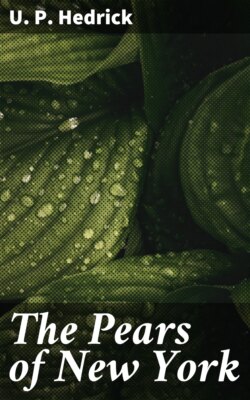Читать книгу The Pears of New York - U. P. Hedrick - Страница 18
На сайте Литреса книга снята с продажи.
THE STRUCTURAL BOTANY OF THE PEAR
ОглавлениеTable of Contents
A major purpose in The Pears of New York is to describe varieties of pears so that their faults and merits can be seen, and that varieties may be identified. It is apparent at once that one cannot describe accurately nor understand the descriptions of others unless acquainted with the organs of tree and fruit—one must know the form and structure of the whole plant. A study of the organs of plants is structural botany. Plant descriptions are portraitures of the plant’s organs, and structural botany thus becomes the foundation of systematic pomology, with a study of which, as concerns the pear, we are to be chiefly concerned in the following pages. We must, therefore, pay some attention to the structural botany of the pear. A pear is one of the pome-fruits. What is a pome?
A pome is variously defined by students of structural botany. The most conspicuous part of the apple, pear, or quince, the best-known pome-fruits, is the outer, fleshy, edible part. This succulent part is said by some botanists to be the thickened calyx; others say that it is the enlarged receptacle. Some botanists believe that a pome consists of two to five drupe-like fruits, each drupe called a carpel, each of which contains one or more seeds. These drupes, if they are rightly so-named, are held together by a fleshy receptacle. The best definition seems to be that a pome is a fleshy fruit of which the compound ovary is borne within and connected to the receptacle.
